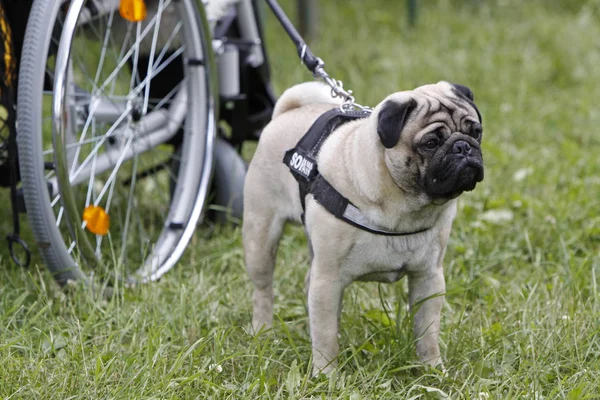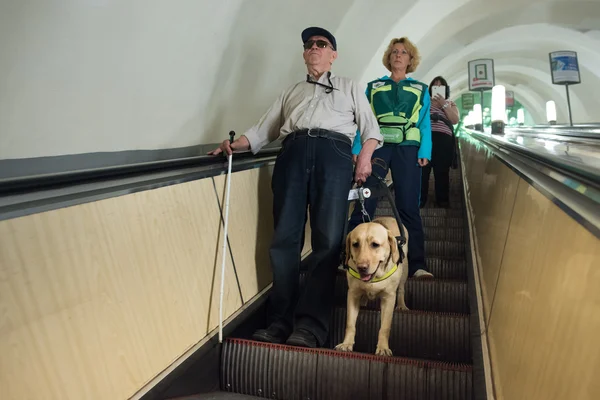Guiding the Way: The Training of Guide Dogs
In a world that relies heavily on the visual, navigating day-to-day life can present a unique set of challenges for the visually impaired. But thanks to the extraordinary ability of guide dogs, individuals who are blind or have low vision are finding increased independence and companionship. These canine heroes don’t just appear overnight; they undergo a rigorous and heartwarming journey from playful puppies to dependable guides. In this article, we’ll explore the intricate process behind the training of guide dogs and how these remarkable animals are transforming lives, one step at a time.
Guiding the Way: Canine Heroes
Table of Contents
Guide dogs are more than pets; they are highly trained professionals that provide an invaluable service to their human partners. The role of a guide dog is to help navigate obstacles, stop at curbs and steps, avoid overhead hazards, and ensure the safety of their handler in both quiet neighborhoods and bustling city streets. They serve as the eyes for those who cannot see, offering not just physical guidance but also emotional support and companionship. These dogs, often from breeds such as Labrador Retrievers, Golden Retrievers, and German Shepherds, are celebrated for their intelligence, loyalty, and calm demeanor—traits that make them ideal for the job.

The Journey Begins: Puppy Pick
The journey of a guide dog begins with careful selection, known as the “puppy pick.” Breeders associated with guide dog programs prioritize health, temperament, and intelligence when selecting dogs to enter the training program. Puppies destined to become guide dogs are often raised by volunteer puppy raisers who provide a loving home, introduce them to a variety of environments, and begin basic obedience training. This early stage is crucial as it sets the foundation for the puppy’s future success as a working dog.
Paws and Learn: Basic Training
Following the puppy stage, dogs undergo basic training where they learn fundamental skills necessary for their future roles. This training includes:
- Socialization: Exposing the dog to various settings and people to ensure they are comfortable and confident in different environments.
- Obedience: Teaching commands such as “sit,” “stay,” “come,” and “heel” to ensure they can be controlled and directed.
- Leash Work: Acclimating the dog to walking on a leash without pulling or becoming distracted.
Trainers use positive reinforcement methods, rewarding dogs with treats, praise, and play to encourage desired behaviors. This phase is essential to prepare the dogs for the advanced training to come.

Navigating the World: Advanced Skills
In advanced training, dogs learn the specialized skills needed to guide someone with visual impairments safely. This process includes:
- Learning to judge height and width to navigate their handler through tight spaces.
- Identifying and avoiding obstacles that could pose a danger to their handler.
- Stopping at curbs and stairs until it is safe to proceed.
- Leading their handler to requested locations such as doors or seats.
- Ignoring distractions to maintain focus on their work.
Trainers simulate real-life scenarios to ensure that guide dogs are ready for anything they might encounter while on duty.
Bonding with the Blind: Matching Day
After mastering their training, guide dogs are matched with a visually impaired person—a process that is both art and science. The match is based on factors such as lifestyle, walking speed, and personality. During “matching day,” the new partnership begins to bond, and the handler learns how to work with their guide dog. This includes understanding how to interpret and manage the dog’s movements, behaviors, and cues. The success of the partnership hinges on the bond between the handler and their guide dog, and this bonding process is just as important as the training itself.
Eyes on the Street: Urban Training
Once matched, guide dogs and their handlers move on to urban training, where they practice navigating city environments. This includes:
- Crossing busy streets safely.
- Dealing with public transportation such as buses and trains.
- Managing in crowded places like shopping centers and restaurants.
Urban training is vital as it teaches the guide dog and handler to work in harmony amidst the chaos and unpredictability of city life.

Graduation Paws: Certification Milestone
Upon successful completion of training and bonding, guide dogs and their handlers participate in a graduation ceremony. This milestone marks the official certification of the guide dog and the beginning of their working life. The event celebrates the achievements of the guide dog and honors the trainers and puppy raisers who played a pivotal role in the dog’s journey. With certification, the team is legally recognized, and the guide dog is permitted to accompany their handler in public places where pets may not typically be allowed.
Beyond the Leash: Life with a Guide Dog
Life with a guide dog extends far beyond the end of the leash. These dogs offer their handlers freedom, mobility, and a sense of security. They also provide companionship, alleviating the isolation that often accompanies visual impairment. Living with a guide dog is a deep commitment, with handlers responsible for the dog’s health, well-being, and continued obedience. Together, they navigate the complexities of daily life, forming an unbreakable bond built on trust, respect, and mutual care.
Guide Dog Breeds Comparison Table
| Breed | Size | Temperament | Energy Level |
|---|---|---|---|
| Labrador Retriever | Large | Friendly, Eager | High |
| Golden Retriever | Large | Intelligent, Kind | High |
| German Shepherd | Large | Confident, Courageous | High |
The journey of a guide dog from a playful puppy to a guiding hero is a remarkable one, filled with dedication, love, and expert training. These canine companions are not just pets, but lifelines to their handlers, offering a new realm of possibilities. As they walk side by side, each guide dog proudly upholds a legacy of service, transforming the lives of those in the visually impaired community. Their unwavering commitment reminds us of the profound bond that can exist between humans and animals, and the extraordinary ways in which that bond can change lives.

